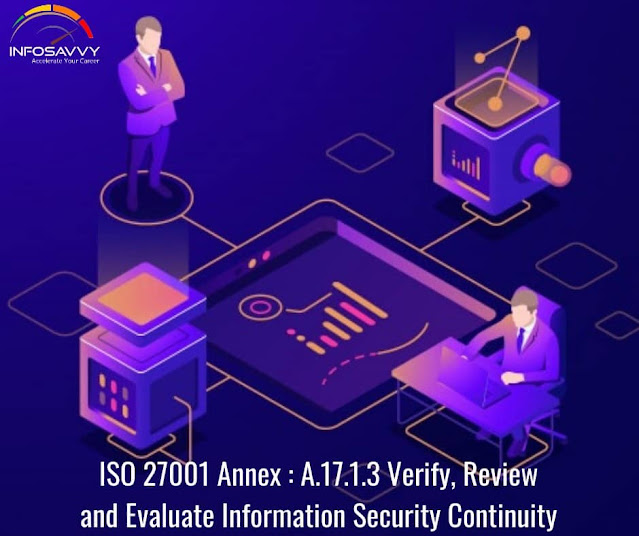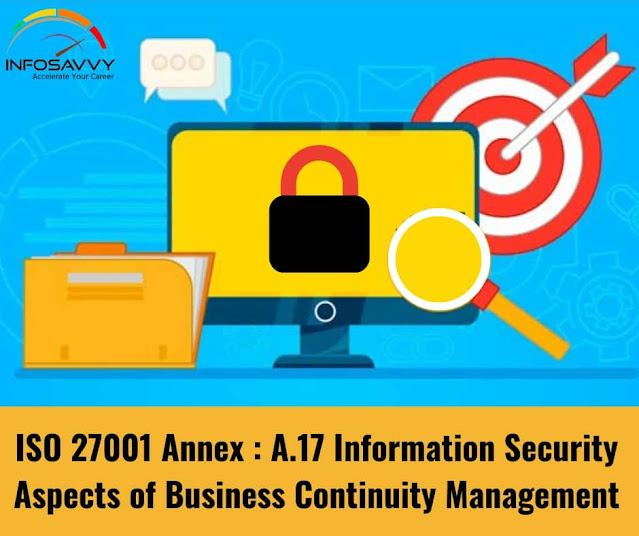ISO 27001 Annex : A.17.1.3 Verify, Review and Evaluate Information Security Continuity

Control- ISO 27001 Annex : A.17.1.3 Verify, Review and Evaluate Information Security Continuity In order to ensure accurate and productive to adverse circumstances, the company must review on-going controls on safety information defined and enforced at regular intervals. Implementation Guidance- Changes in organizational, technological, administrative and procedures, whether operational or framework, will lead to changes in the criteria for the continuity of information security . In such cases, the continuity of information security processes, procedures and controls against these changed requirements should be reviewed. “It is far better to foresee without certainty than not to foresee at all” – Henri Poincare Organizations will track the consistency of their management of information security by: Exercise and test the reliability of systems, procedures, and controls for the protection of information in compliance with objectives of information continuity; Exercise and test expe



